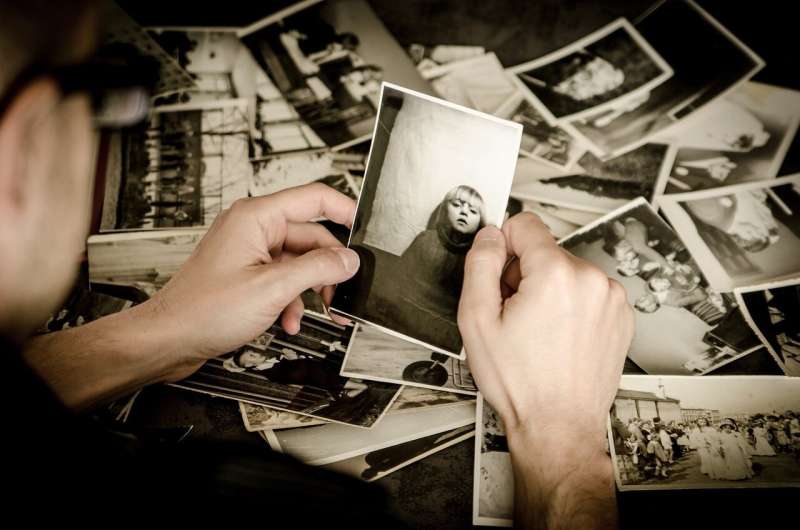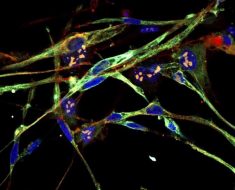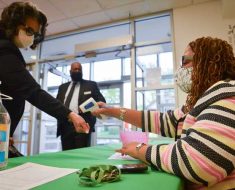
“Dang it, I lost my keys!”
One solution to this frustratingly common scenario is to retrace your steps. This can be done by physically moving through the space where you suspect your elusive keychain is hiding or, as explored in recent research in Psychological Science, scanning your memory to find them.
Humans structure memories of these kinds of continuous experiences using event boundaries, according to lead author Sebastian Michelmann, who conducted this research with Uri Hasson and APS Fellow Kenneth A. Norman (Princeton University).
“Intuitively, we perceive structure in the form of events in continuous experience. A ‘restaurant visit’ and a ‘train ride’ are examples of such events,” Michelmann said in an interview. “When one event ends and another begins, people perceive an event boundary, and human observers agree substantially on the exact moments when an event boundary happens.”
Michelmann and colleagues’ research suggests that people use these event boundaries as “stepping stones” to scan their memories when attempting to recall certain facts or bits of information. In the case of the lost keys, he said, this might involve reaching back to the last moment you clearly remember having your keys—say, as you walked in the front door—before skipping ahead to a “phone call” event and then a “watching TV” event, at which point you might recall placing the keys next to the remote.
“When people search through continuous memories, they can do that slowly and thoroughly, but they can also skip ahead to the next event boundary when they decide that the answer that they are looking for is not in the current event,” Michelmann said. “Event boundaries are important access points for this skipping, which is why we refer to them as stepping stones in the memory search process.”
Michelmann, Hasson, and Norman examined this process through a series of three online studies in which participants were tasked with scanning their memories for details about two seven-minute abridged versions of the film Gravity.
In the first study, the researchers established event boundaries within each short film by having 104 participants press a button each time they perceived an event to have ended. As in previous research, the participants’ perceptions of event boundaries were highly consistent.
In the second study, 180 participants answered questions about the events in both short films. Each question started by identifying an anchor event in the film before asking the participant to recall information that occurred after this point. For example, “In the space station, we see little flames flying into the hallway. When is the next time we see fire?”
The questions were designed to involve either a single isolated event or a specific number of event boundaries with a set run time. After being presented with the question, participants were instructed to click a “Respond” button as soon as they remembered the answer.
By comparing the actual run time of each event or set of events with how long it took participants to click the response button, Michelmann and colleagues determined that individuals were able to scan 1 second of an event in about 48 milliseconds. Participants scanned, on average, just 1.9 second of an event before skipping ahead to the next one if they did not find the information they were looking for.
The researchers found their stepping-stones model of memory scanning, which accounts for the time at which the target information appears within an event and, consequently, the target’s distance to event boundaries, to be a better fit for participants’ responses than a model based only on the length of each event being scanned.
“The stepping-stones model predicts that the target’s distance to the previous event boundary makes a high relative contribution to [response times] because a low skipping threshold ensures that little time is spent within each event; the final event, however, is searched without skipping,” Michelmann and colleagues wrote.
The researchers further tested this model through a third study of 100 participants. This time, participants were asked to mentally simulate or “replay” everything that happened between two event boundaries in each film. Although participants still engaged in some amount of temporal compression, they took more time to review fully simulated events than participants did when looking for information, suggesting that we recall events with a higher skipping threshold when simulating versus scanning our memories.
“Search time can be explained using a model in which participants skip through all events except the last one, which needs to be played through in its entirety to find the sought-after memory that it contains,” Michelmann and colleagues wrote.
In future work, Michelmann would like to explore how schematic knowledge about information in our environment interacts with episodic memory to support recall of specific versus typical experiences. Remembering what a typical birthday party is like could support recall of specific details about an individual’s 30th birthday celebration, for example, but relying too much on these schemata could also cloud our memories of unique details, he said.
More information:
Sebastian Michelmann et al, Evidence That Event Boundaries Are Access Points for Memory Retrieval, Psychological Science (2023). DOI: 10.1177/09567976221128206
Journal information:
Psychological Science
Source: Read Full Article





